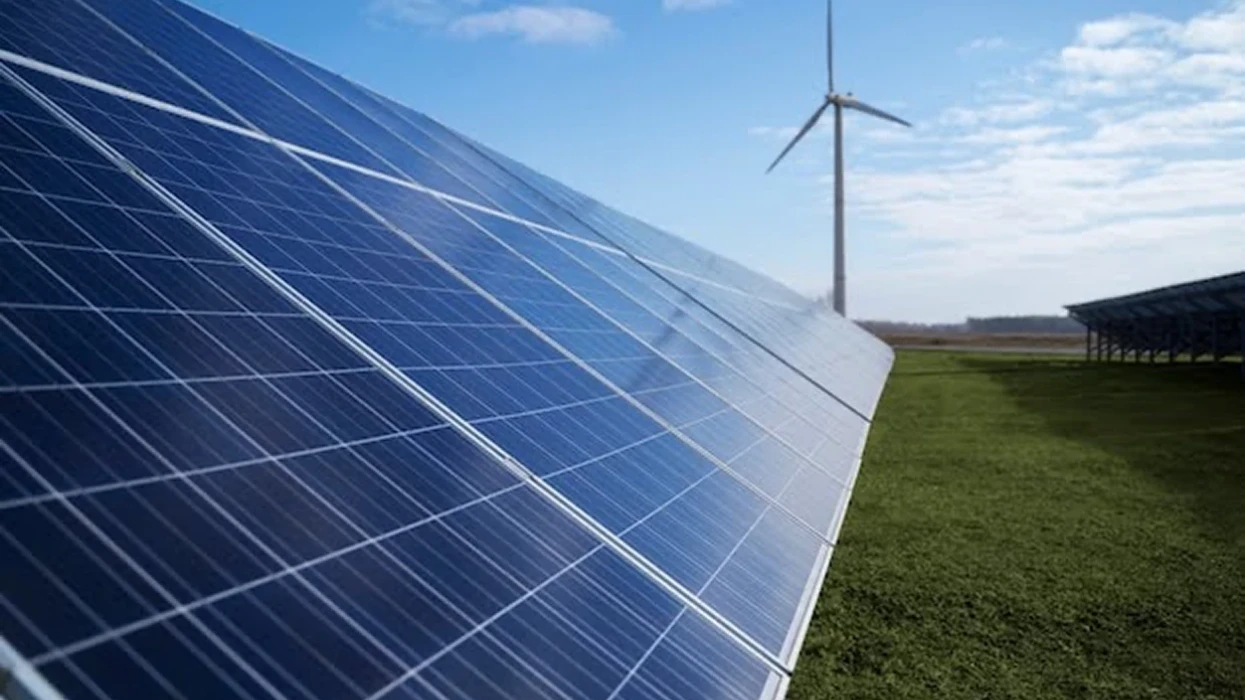As the world experiences more extreme temperatures and humanity faces dangerous weather conditions, we question our old approach to fuels and electricity. We slowly abandon fossil fuels and move on to renewable energy sources such as the sun, wind, water, etc.
In this article, we talk about how natural resources help us power our cities and why they are inherently better for the environment.
What are renewable energy sources?
Sources of renewable energy are abundant, and they replenish themselves faster than the world could ever consume them. That is why they are called renewable. This includes:
- solar;
- wind;
- water;
- biomass;
- heat;
- seawater.
For instance, we have been using solar power – the most common renewable energy source – for centuries, according to the history of solar energy, and we continue to harness the sun to transform it into electricity.
This source is never-ending. The non-renewables like coal, oil, and gas, on the other hand, take many years to form. When burned, they also emit greenhouse gases, which are harmful to the environment.
Main types of renewable energy
Now that we have learned this trend, let’s look at renewable energy resources examples. Currently, there are six main sources we utilise and transform into power.
Solar energy
As previously mentioned, solar power is one of the most abundant types of renewables. It can be collected anywhere – even in cloudy weather, despite the lack of visible sun. Although it does not generate at night, it can still be accumulated in battery storage units during the day for nighttime usage. There is 10,000 times more solar power received by the planet than we consume, which makes it a perfect resource in the long term and one of the cheapest renewable energy sources.
Sun can be used in heating, cooling, natural lighting, electricity, and even fuels, regardless of the market. Since the beginning of humanity, we have used it naturally to heat our homes. Now, we install solar panels to convert them into electricity.
Wind energy
Types of renewable sources of energy include wind. To get power from the wind, we use hybrid renewable energy systems with huge turbines and battery storage that are often based remotely onshore and offshore. As wind moves through the turbines, they spin, creating kinetic power that is transformed into electricity. The amount of power depends on the size of the turbine and location — different places have different wind speeds.
The potential of wind power is immense, especially for offshore locations. Many regions have strong wind speeds, so it is possible to harness electricity to power whole cities, and it’s one of the most cost-effective renewable energy sources out there.
Hydropower
Hydropower uses the power of water, hence the name. It generates power when water travels from high to low locations, such as rivers, where the flow is already available. Hydropower plants are also an option. In that case, it depends on the reservoir of stored water. But power supply is not the only thing reservoirs are used for. Often, they provide drinking water, resources for irrigation and drought control, etc.
Hydropower is one of the biggest environmentally friendly renewable energy sources in the world right now. While it is a stable solution, hydropower plants can harm the environment. So, it is important to stick to eco-friendly hydropower options.
Biomass energy
Biomass is one of the possible renewable energy sources that could potentially harm the planet. Burning biomass creates greenhouse gas emissions. And while it is produced from organic materials like wood, manure, and crops and is mostly used in rural areas, it could become dangerous in large-scale applications. It can also result in deforestation, land-use change, and increases in bioenergy plantations.
Modern systems, however, use residues and dedicated crops for bioenergy production. They also utilise organic waste effectively.
Geothermal energy
During geothermal energy generation, the heat is pulled from geothermal reservoirs. Some of them are naturally hot and permeable – they are called hydrothermal reservoirs.
Reservoirs improved by humans are referred to as enhanced geothermal systems. Geothermal power has been used in modern applications for years, so it is reliable and fully under our control.
Ocean energy
Ocean energy is one of the new sources of renewable energy. Technologies use the kinetic and thermal power of sea waves and currents to produce power. Then, it is transformed into electricity and heat. This approach is still underdeveloped, and people are studying the waves and current patterns to explore its potential.
The role of renewable energy in a sustainable future
Harnessing the power of the sun and wind has been around forever, giving us heat, light, and energy. Over 500 years ago, though, people started using non-renewables, resulting in ecosystem issues. Fortunately, we have innovative technology to capture and transform the sun, wind, and kinetic power into energy. In the U.S. alone, they encompass more than 12% of the total generation, according to recent data from the Natural Resources Defense Council. In Europe, this number reached 46.9% in 2024, as reported by Eurostat.
As we continue to see more benefits of renewable energy sources, our dependence on them will grow. More companies and governments will adopt them and include them in the old power infrastructures. Individuals will install renewable power farms at their homes more often to adhere to net-zero carbon emissions and sell the electricity back to the grid. Rural communities will fully rely on green energy. The global goal will be to modernise the entire grid and reach net-zero.
Frequently asked questions
- Can renewable energy replace fossil fuels completely?
Whether we choose the cleanest renewable energy source, like wind, or biofuels that still emit greenhouse gases, we can fully use them instead of fossil fuels. Once we break our dependence on oil, gas, and coal and transform our grid, green power can keep industries and governments running.
- What are the economic benefits of renewable energy?
Nowadays, you can find cheap renewable energy sources and build cost-effective solutions to transform them into electricity and fuel. Green power also has a chance to create hundreds of new employment opportunities. Moreover, companies that work with renewables can attract more investors and environmentally responsible consumers.







